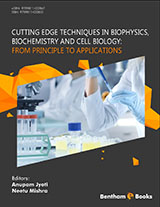Abstract
In X-ray crystallography, the phase problem is a major bottle neck, it would be successful only if we obtain a suitable template or phases can be determined experimentally. However molecular replacement calculation is the most useful technique and it could be applied when there is a homologous structure known. To obtain the phase information, the most widely used method is derivatization of heavyatoms for protein crystals, although it is generally not used nowadays. While it is a valuable technique to obtain the phases for unidentified structures having no identity with the homologous for using molecular replacement (MR) and the crystals that cannot be diffracted even at synchrotron, nowadays, the SAD and MAD methods for experimental phasing have been developed. The more advanced technique has also been developed that is Cryo-EM and SFX with XFELs, having enormous potential for determining the structure of novel proteins that are not acquiescent to produce a crystal that cannot diffract.
Keywords: Cryo-electron microscopy (Cryo-EM), Experimental phasing, Multiwavelength anomalous dispersion, MAD (multiple-wavelength anomalous dispersion), Single wavelength anomalous dispersion, Single and multiple isomorphous replacement, Serial femtosecond crystallography (SFX) with X-ray free electron lasers (XFELs), SAD (single-wavelength anomalous dispersion).






















